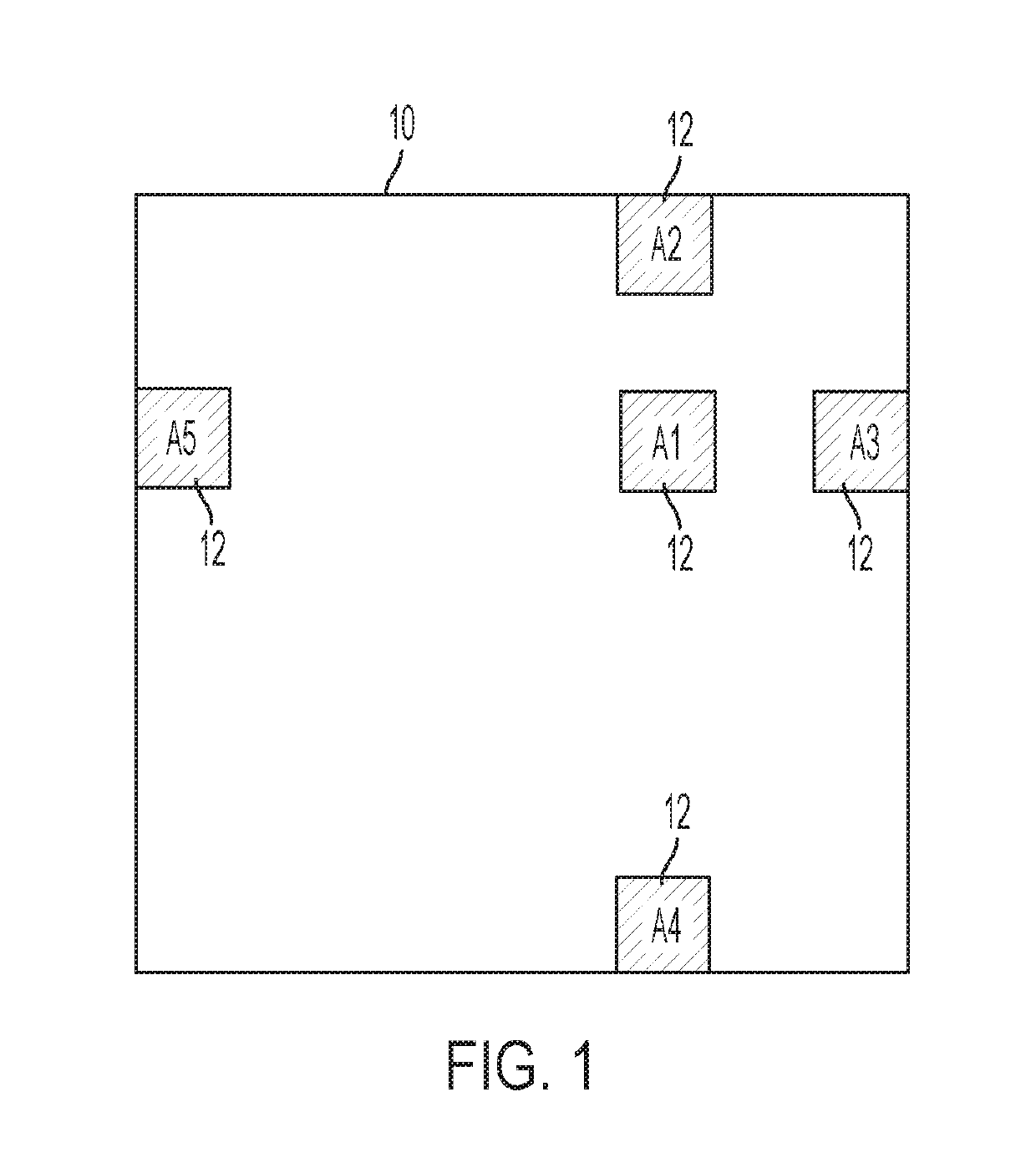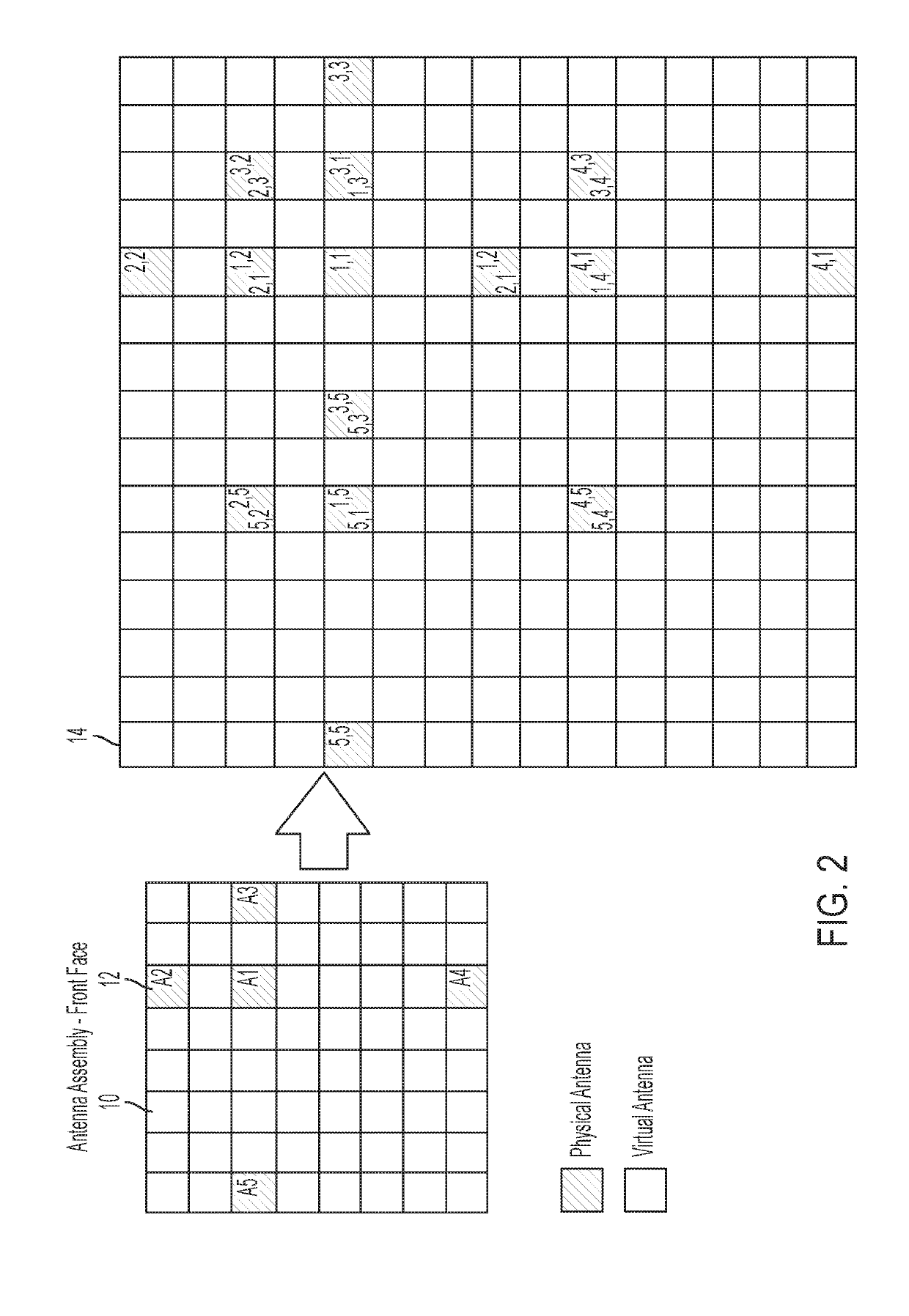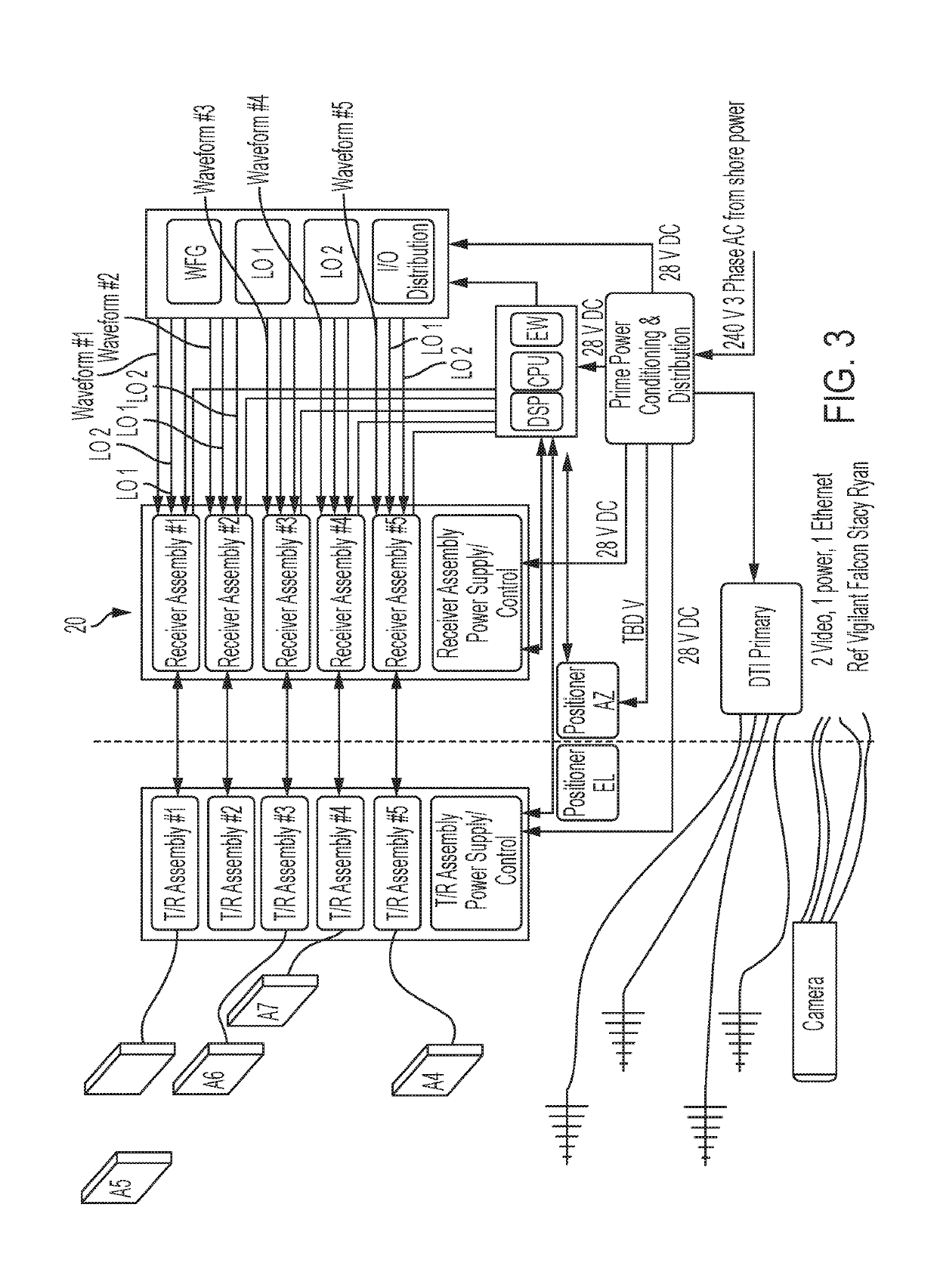Unambiguous Interferometer Radar Architecture
a radar and interferometer technology, applied in the field of radar systems, can solve the problems of unambiguous target position estimation for any target, non-uniform distribution of virtual sub-apertures, etc., and achieve the effect of maximum accuracy and minimal ambiguity
- Summary
- Abstract
- Description
- Claims
- Application Information
AI Technical Summary
Benefits of technology
Problems solved by technology
Method used
Image
Examples
Embodiment Construction
[0018]Referring to the figures, wherein like numeral refer to like parts throughout, there is seen in FIG. 1 an exemplary MIMO interferometer antenna system 10 having five sub-apertures 12, aligned in an offset, off-centered cross pattern according to the present invention to resolve targets within the entire sub-aperture beamspace, and to do so unambiguously. A separate waveform may be transmitted from each sub-aperture 12 simultaneously. Thus, system 10 of FIG. 1 assumes N separate waveforms are transmitted from each sub-aperture (or “aperture”), where N is the number of antenna sub-apertures 12. The waveforms are all of the same center frequency and bandwidth, and are coded such that they are separable (orthogonal) on receive. For example, the separability may be achieved via constant amplitude, phase coded waveforms, frequency coding, time sequencing, or other approaches, with each having varying benefits and challenges known in the art such that the approach can be selected as ...
PUM
 Login to View More
Login to View More Abstract
Description
Claims
Application Information
 Login to View More
Login to View More - R&D
- Intellectual Property
- Life Sciences
- Materials
- Tech Scout
- Unparalleled Data Quality
- Higher Quality Content
- 60% Fewer Hallucinations
Browse by: Latest US Patents, China's latest patents, Technical Efficacy Thesaurus, Application Domain, Technology Topic, Popular Technical Reports.
© 2025 PatSnap. All rights reserved.Legal|Privacy policy|Modern Slavery Act Transparency Statement|Sitemap|About US| Contact US: help@patsnap.com



